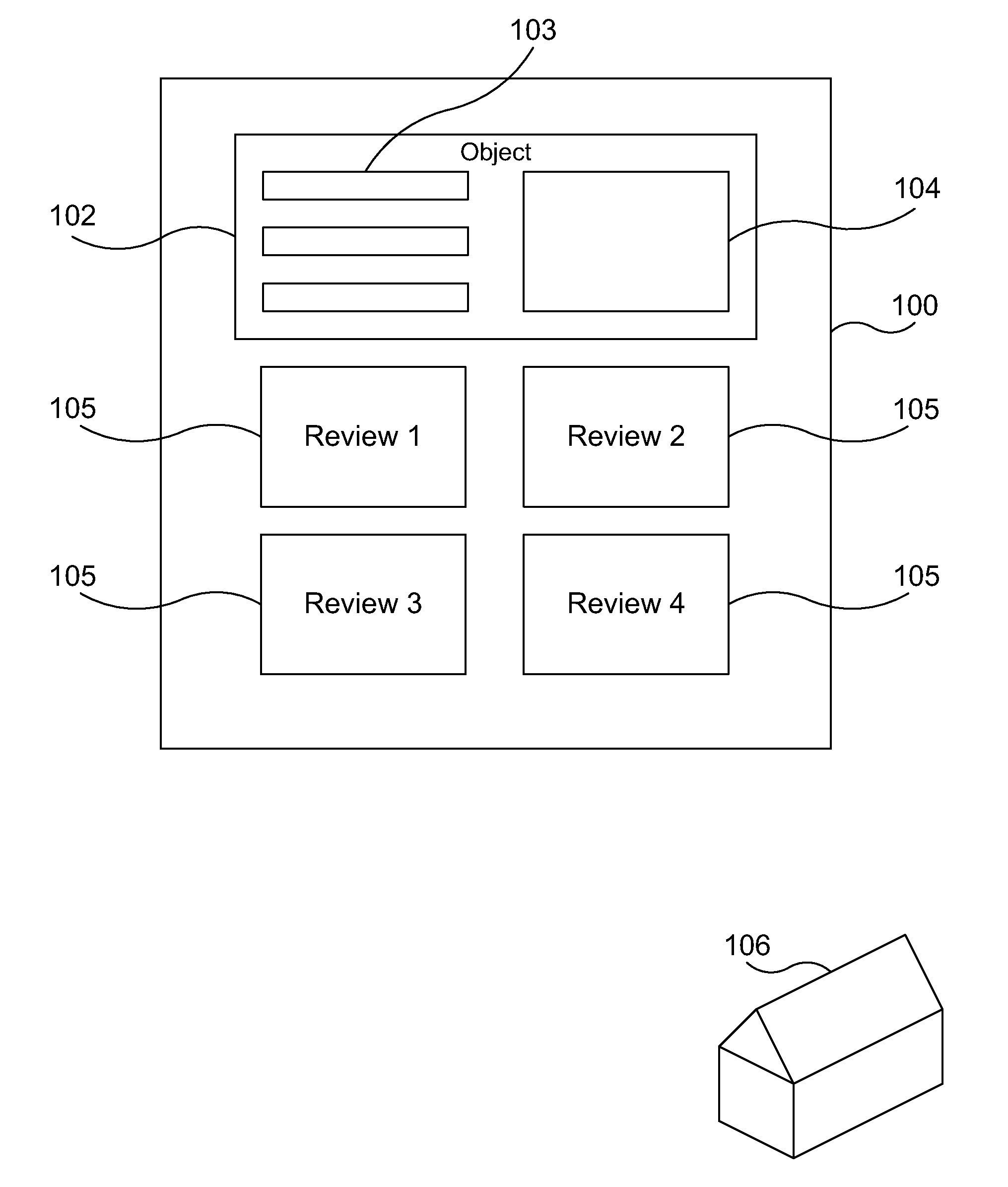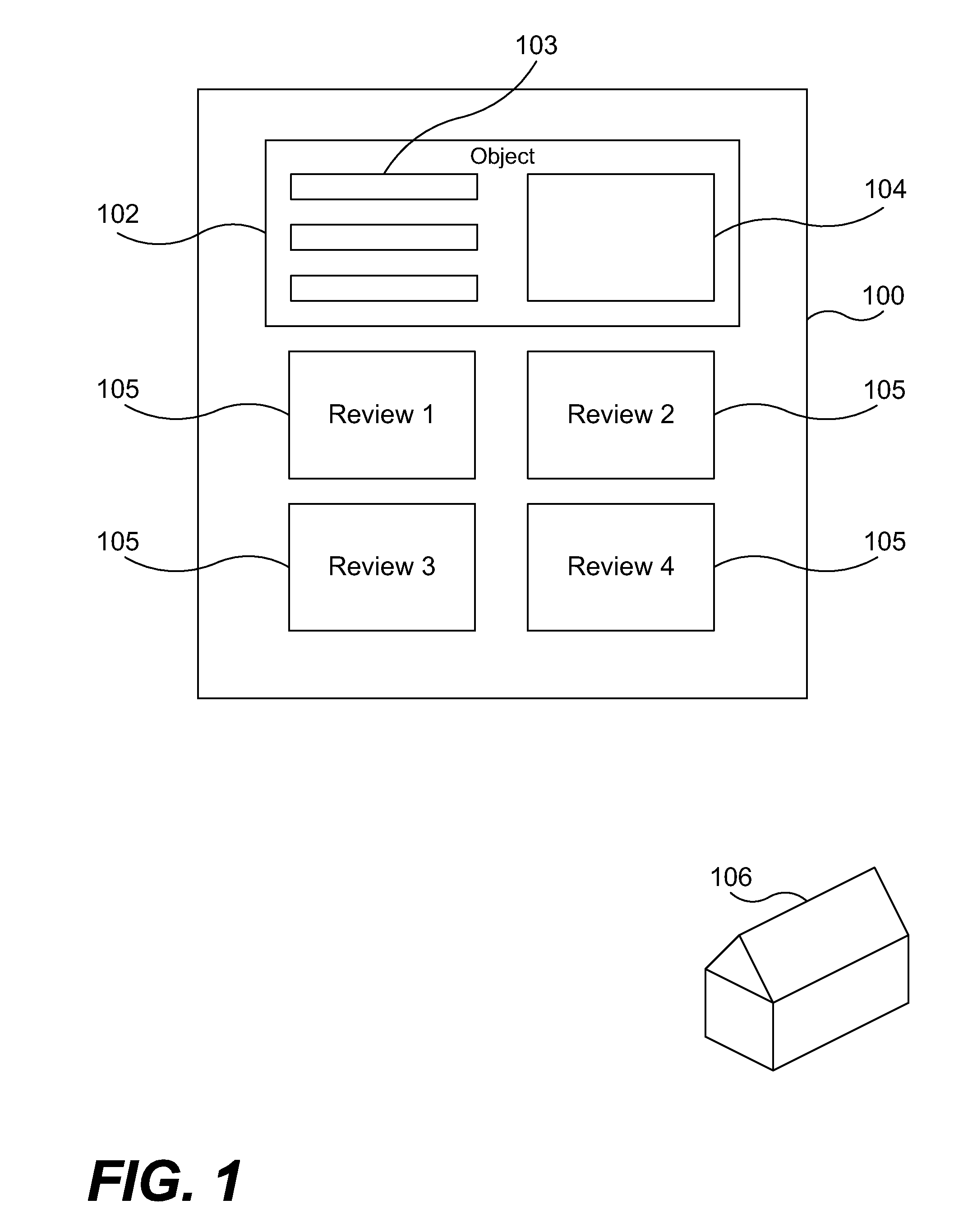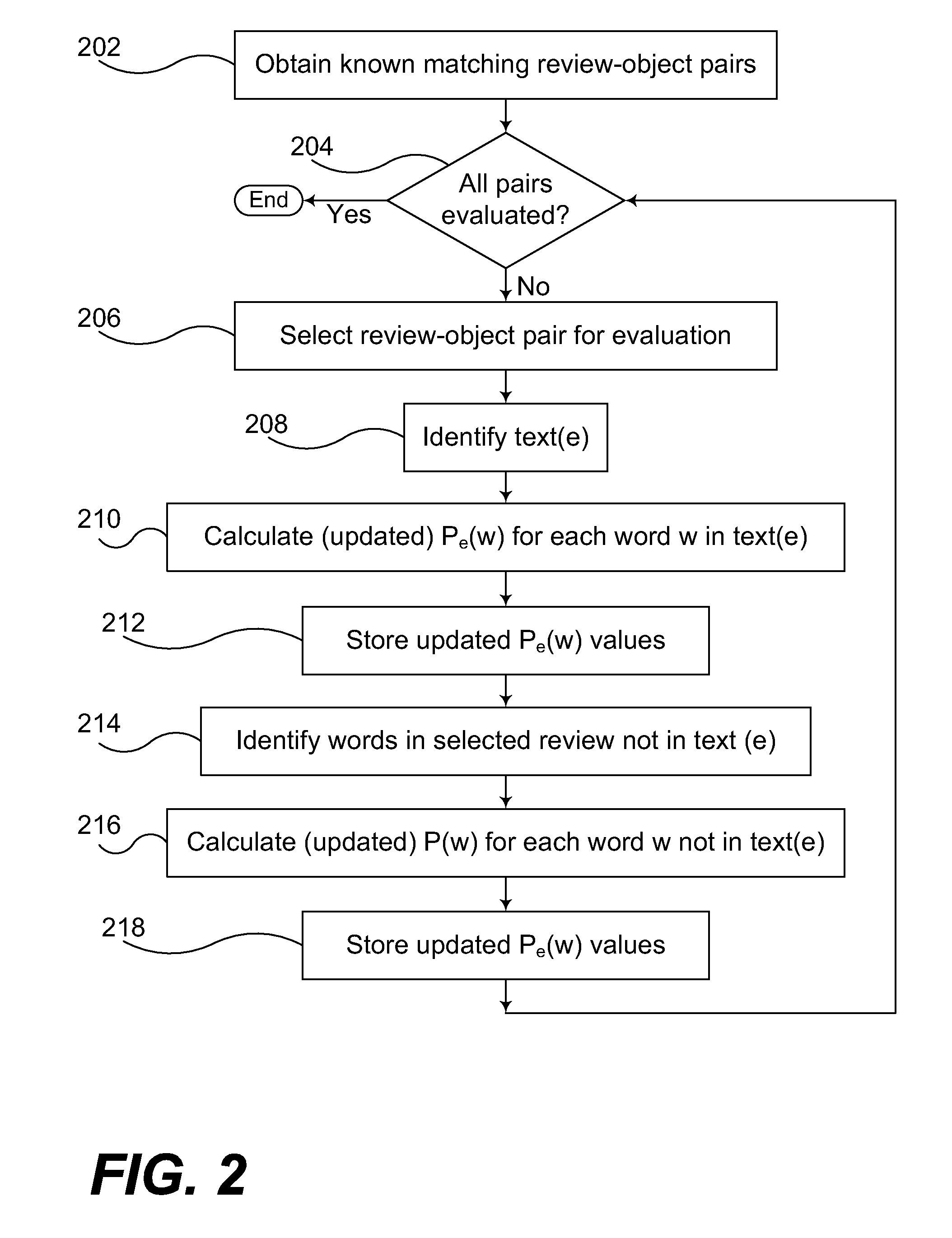Matching reviews to objects using a language model
- Summary
- Abstract
- Description
- Claims
- Application Information
AI Technical Summary
Problems solved by technology
Method used
Image
Examples
example
[0041]The following example involves matching of a sample review rs against two sample objects e1 and e2.
[0042]rs=“Krung That Restaurant in Mountain View has great food!!”
[0043]e1=“Krung That, Mountain View”
[0044]e2=“Mountain That Restaurant, Sunnyvale”.
[0045]a=0.02
[0046]The P(•) values are set forth in Table 2:
TABLE 2WordP(.) valueKrung2.03E−06Thai0.00048Restaurant0.0037Mountain4.35E−05View0.0004Sunnyvale5.67E−06
[0047]In this example, assume a uniform Pe(•), i.e., since there are four (4) words in each entity, let Pe(•)=¼ for each word.
[0048]Then, according to equation (4),
score(el)=score(Krung)+score(Thai)+score(Mountain)+score(View)=log(1+0.02 / 0.98*0.25 / 2.03E-06)+log(1+0.02 / 0.98*0.25 / 0.00048)+log(1+0.02 / 0.98*0.25 / 4.35E-05)+log(1+0.02 / 0.98*0.25 / 0.0004)=7.83+2.45+4.77+2.62=17.67Score(e2)=score(Mountain)+score(Thai)+score(Restaurant)=4.77+2.45+0.87=8.09
Thus, e1, which has the highest score, is matched to the sample review rs.
Computer System
[0049]FIG. 4 is an illustrative drawing of ...
PUM
 Login to View More
Login to View More Abstract
Description
Claims
Application Information
 Login to View More
Login to View More - R&D
- Intellectual Property
- Life Sciences
- Materials
- Tech Scout
- Unparalleled Data Quality
- Higher Quality Content
- 60% Fewer Hallucinations
Browse by: Latest US Patents, China's latest patents, Technical Efficacy Thesaurus, Application Domain, Technology Topic, Popular Technical Reports.
© 2025 PatSnap. All rights reserved.Legal|Privacy policy|Modern Slavery Act Transparency Statement|Sitemap|About US| Contact US: help@patsnap.com



